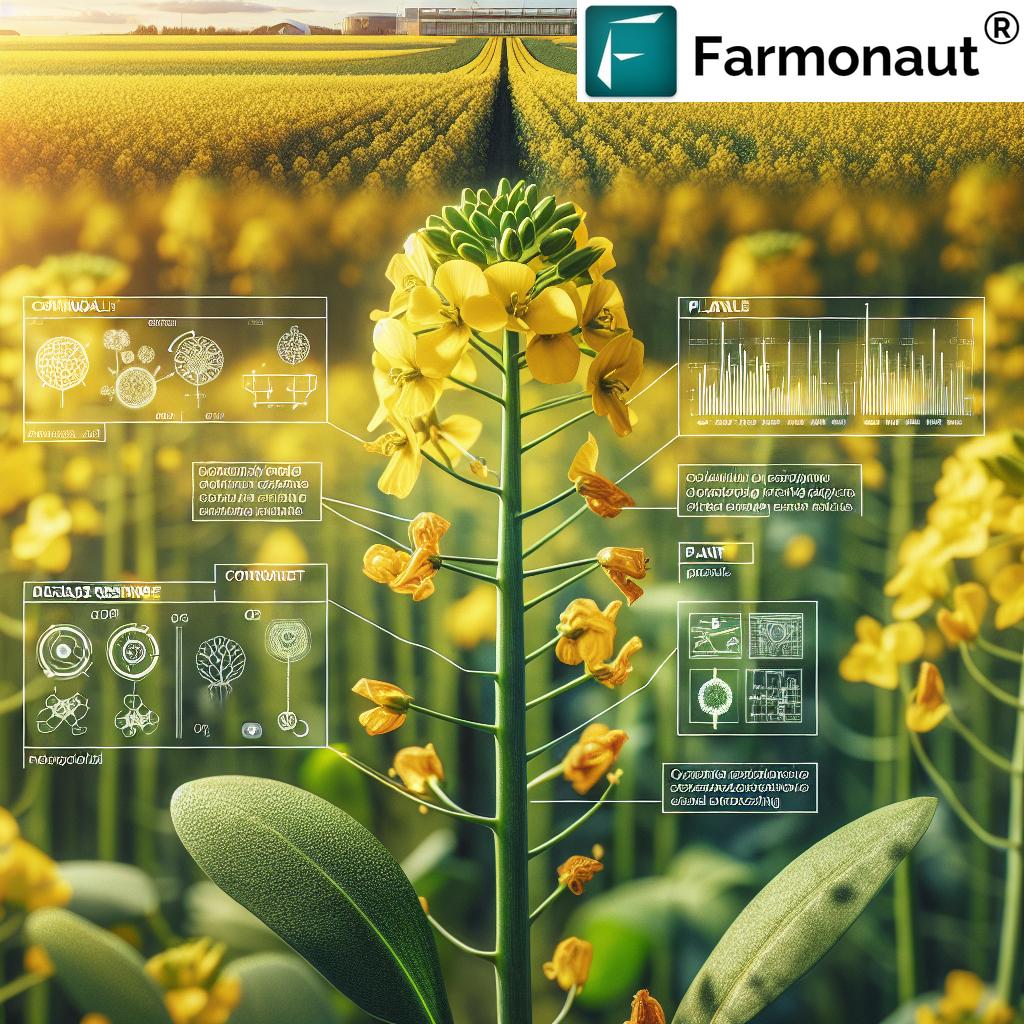Table of Contents
- Introduction: Why Natural Pest Control in Corn Matters
- Corn Pest Control Trivia
- 7 Shocking Eco Hacks for Natural Pest Control in Corn
- Cultural Practices for Pest Control in Corn
- Biological Pest Control Methods
- Natural Substances for Pest Management
- Integrated Pest Management for Corn
- Comparison Table: The 7 Natural Eco Hacks
- Farmonaut’s Role in Sustainable Pest Management
- Trivia: Crop Rotation and Pest Infestations
- FAQ: Natural Pest Control in Corn
- Conclusion: Sustainably Protecting Our Corn
Natural Pest Control for Corn: 7 Shocking Eco Hacks!
Natural pest control in corn is not just an eco-friendly trend; it is an essential approach for sustainable farming and global food security. By employing natural, biological, and cultural practices for pest control, we can effectively manage pest populations while conserving beneficial organisms, building resilience in our crops, and promoting environmental health. This blog reveals seven powerful eco hacks—ranging from crop rotation to deploying beneficial insects—to help us achieve effective, environmentally friendly pest control in corn cultivation.
📄 API Developer Docs: Get set up quickly & integrate satellite-powered pest management tools into your platform.
Introduction: Why Natural Pest Control in Corn Matters
Modern corn farming faces the ongoing challenge of managing pests without causing harm to the environment or beneficial organisms. Relying solely on synthetic chemicals can lead to pesticide resistance, soil degradation, and a decline in crop yields. By embracing natural pest control in corn, we not only fight against destructive insects and diseases but also build healthier ecosystems and support sustainable agriculture across our regions—including in major corn-producing areas like the U.S., India, and Africa.
Through this guide, we equip ourselves with the best natural methods, eco-friendly strategies, cultural practices, and integrated pest management (IPM) to protect our corn. Let’s explore these actionable and effective hacks that will help us manage pest populations efficiently—while promoting long-term sustainability.
7 Shocking Eco Hacks for Natural Pest Control in Corn
Let’s take a birds-eye view of the seven best eco hacks for effective pest control in corn—all of which emphasize sustainability and environmentally friendly practices:
- Crop Rotation for Pest Control: Disrupts pest life cycles and reduces populations.
- Trap Cropping: Uses attractive plants to lure pests away from corn.
- Push–Pull Intercropping: Combines repellent/attractive plants in strategic patterns.
- Deploying Beneficial Insects: Harnesses natural enemies to control pests.
- Utilizing Biological Controls (Fungi & Nematodes): Uses entomopathogenic organisms as eco-friendly weapons.
- Applying Natural Substances: Instead of chemicals, use neem oil, diatomaceous earth, and Bt.
- Integrated Pest Management (IPM): An intelligent blend of monitoring, thresholds, and multi-pronged control.
As we deep-dive into each method, we’ll discover how to implement, optimize, and combine these strategies for robust natural pest management in corn.
Cultural Practices for Pest Control in Corn
Implementing robust cultural practices for pest control is a foundational aspect of natural pest control in corn. These practices aim to modify our field environments and corn cultivation methods so pests are deterred, interrupted, or deprived of suitable breeding conditions. Let’s explore the eco hacks under this banner:
1. Crop Rotation for Pest Control
- What it is: Crop rotation means growing different crops (non-grass species) in sequential growing seasons instead of continuous corn planting.
- Why it works: Rotating away from corn causes pests (like rootworm larvae) to starve and prevents their reproduction, as they lose their primary host.
- How to use: For optimal results, rotate corn with legumes, soybeans, or small grains, ensuring a period of at least two years between corn plantings in the same plot (source).
- Benefits: Reduces pest populations, boosts soil fertility, and enhances crop resilience for sustainable, environmentally friendly pest control.
2. Trap Cropping to Attract & Divert Pests
- What it is: This method involves planting specific crops (trap crops) around or near corn to attract pests away from the valuable main crop.
- How it helps: Mustard, alfalfa, or other attractive plants can lure unwanted pests like lygus bugs, who prefer these alternatives, thus diverting pest damage from the corn (source).
- Practical tip: Routinely inspect and manage trap crops—remove or treat them if pest populations surge—to prevent the build-up of high pest numbers.
3. The Push–Pull Strategy in Corn Intercropping
- Definition: Intercropping “push” plants (repellent species) within corn rows while planting “pull” crops (trap plants) around field edges (source).
- Examples: Desmodium in-between corn repels stem borers, while Napier grass or Sudan grass on the border pulls borers away and traps them.
- Effectiveness: This strategy disrupts pest life cycles, reduces reproduction rates, and supports overall effective pest management with minimal chemical inputs.
Enhancing Cultural Practices with Advanced Monitoring
Corn farmers can optimize these cultural practices with real-time monitoring. For instance, by utilizing Farmonaut’s Large-Scale Farm Management Platform, we can access satellite-powered vegetation and moisture data to time crop rotations, monitor trap cropping success, and evaluate field-level pest threats for maximum resilience and yield.
Biological Pest Control Methods: Harnessing Nature’s Own
Biological pest control methods are powerful allies for natural pest control in corn. By leveraging natural predators, parasites, and pathogens, we promote ecological balance and sustainable pest reduction, without harming non-target organisms.
4. Deploying Beneficial Insects for Corn Pests
- What are beneficial insects? These are natural enemies of corn-damaging pests, including ladybugs, lacewings, and parasitic wasps (such as Trichogramma species).
- How they work: Beneficial insects either consume pests (e.g., ladybugs eat aphids) or lay eggs inside pests (parasitoid wasps), leading to pest demise.
- Key targets: Aphids, corn borers, armyworms, and lygus bugs.
- Tip: To support these allies, avoid broad-spectrum insecticides, and consider planting small strips of wildflowers or herbs as insectary plants.
5. Using Entomopathogenic Fungi and Beneficial Nematodes
a. Entomopathogenic Fungi (e.g., Beauveria bassiana)
- What they do: Fungi like Beauveria bassiana infect and kill targeted insect pests such as corn leafhoppers, aphids, and beetle larvae (source).
- Eco-safety: These fungi are safe for humans, animals, and beneficial insects.
- Approach: Apply commercial formulations during humid weather for best results.
b. Beneficial Nematodes
- Definition: Nematodes are microscopic roundworms that target soil-dwelling pests like rootworms and cutworms.
- How they work: They enter pest bodies, release bacteria that kill the pest, and reproduce inside.
- Application: Water-in nematode products during early morning or late evening to protected soil around the root zone.
- Benefits: No harm to humans, animals, plants, or pollinators. Part of an integrated approach to natural pest management.
To effectively utilize these biological controls, we must regularly monitor fields, apply when pest populations are emerging, and avoid practices that harm beneficial organisms.
Modern AI-driven pest monitoring platforms can help—such as Farmonaut’s Jeevn AI Advisory System, which provides expert recommendations for sustainable biological control timing in corn.
Natural Substances for Pest Management in Corn
When direct intervention is necessary, natural substances for pest management are powerful alternatives to synthetic chemicals. They can deter, repel, or kill target pests in corn, and generally have lower toxicity and environmental impact.
6. Three Key Natural Substances: Neem Oil, Diatomaceous Earth, and Bt
a. Neem Oil
- Source: Extracted from the seeds of the neem tree (Azadirachta indica).
- Function: Acts as an insect repellent, feeding deterrent, and disrupts insect reproduction; effective against over 200 insect species including aphids, caterpillars, and earworms (source).
- Usage tips: Use early in the morning or late evening. Do not apply during full bloom to protect pollinators.
- Benefits: Safe for beneficial insects when used as directed.
b. Diatomaceous Earth
- Source: Made from fossilized diatoms.
- Mode of action: Sharp particles damage pests’ exoskeletons, causing dehydration and death (source).
- Effective against: Corn earworms, cutworms, beetle larvae, maggots.
- Benefit: Non-toxic to humans and animals; however, avoid applying near beneficial insect habitats.
c. Bacillus thuringiensis (Bt)
- Nature: A soil-dwelling bacterium producing proteins toxic to certain insect larvae, like corn earworms and cutworms (source).
- Application: Spray Bt formulations during early larval stages for best results.
- Selectivity: Bt does not harm beneficial insects, humans, or animals.
By relying on these natural substances for pest management, we achieve targeted, effective pest control with a lighter environmental footprint.
Integrated Pest Management (IPM) for Corn: A Comprehensive Approach
Integrated pest management for corn is the gold standard for sustainable pest reduction. IPM is not a single control but an intelligent system of monitoring, decision-making, and deploying a combination of natural, cultural, and biological controls when and where needed.
- Step 1: Monitor pest populations and beneficial insect presence using regular scouting, traps, and advanced tech (such as Farmonaut’s satellite crop health monitoring).
- Step 2: Set action thresholds – Only intervene when pest numbers reach a level that threatens crop loss, thus reducing unnecessary inputs.
- Step 3: Apply a combination of eco hacks (cultural rotation, trap cropping, beneficial insects, natural substances) for strategic and effective management.
- Step 4: Review and Adjust – Post-harvest, analyze effectiveness and tweak your approach for the next season.
This integrated, data-driven methodology promotes resilience, minimizes chemical reliance, and ensures cost-effective pest control in large and small corn operations alike.
For hassle-free farm monitoring, Farmonaut’s Crop Plantation/Farm Advisory Platform arms farmers with personalized strategies, crop health alerts, and AI-guided recommendations that make implementing natural pest control in corn easier—direct from your smartphone or web dashboard.
Comparison Table: The 7 Natural Eco Hacks for Corn Pest Control
| Eco Hack/Method | Estimated Effectiveness (%) | Common Target Pests | Required Resources | Environmental Impact |
|---|---|---|---|---|
| Crop Rotation | 70% | Rootworms, soil-borne pests | Seeds for rotation crops (e.g., legumes) | Low |
| Trap Cropping | 60% | Lygus bugs, beetles, moths | Mustard, alfalfa, or trap plants | Low |
| Push–Pull Intercropping | 65% | Corn borers, stemborers, leafhoppers | Desmodium, Napier grass | Low |
| Beneficial Insects Introduction | 75% | Aphids, borers, caterpillars | Predatory insects (ladybugs, wasps) | Low |
| Biological Controls (Fungi/Nematodes) | 60–70% | Leafhoppers, rootworms, cutworms | Fungal/nematode formulations | Low |
| Natural Substances (Neem Oil, Diatomaceous Earth, Bt) | 70–85% | Earworms, cutworms, caterpillars | Neem oil, Bt spray, diatomaceous earth | Med |
| Integrated Pest Management (IPM) | 85–90% | Most corn pests | All above + monitoring system | Low |
Farmonaut’s Role in Sustainable Pest Management & Corn Crop Protection
With modern pressures on agriculture, advanced monitoring and advice are essential for timely, targeted, and natural pest control in corn. Farmonaut provides cutting-edge solutions for all types of farms, making precision agriculture and eco-friendly pest management accessible and affordable. Let’s explore the advantages of adopting Farmonaut’s technologies as part of our sustainable pest strategies:
-
Real-Time Crop Health Monitoring:
Satellite-based NDVI, pest, and moisture analytics empower us to track even minor crop stress or pest infestations, enabling early and effective natural interventions. -
Jeevn AI Advisory:
Personalized, AI-driven recommendations for IPM, cultural, and biological control practices—received on your phone or computer. -
Blockchain Traceability:
Ensure your corn is traceable from farm to market. This builds trust with consumers buying environmentally friendly, chemical-free corn. -
Integrated Resource Management:
Efficient fleet & input management tools help us apply biological or natural substances precisely where (and when) they matter most, reducing waste. -
Measure & Minimize Carbon Footprint:
Use Farmonaut’s carbon footprint tracking to document your sustainability efforts and lower greenhouse emissions alongside natural pest management. -
Access to Financing:
If you need credit or insurance for eco-friendly corn production, Farmonaut provides satellite-verified crop status for hassle-free approvals!
Whether managing a small plot or a large corn plantation, Farmonaut puts smart pest control and sustainability tools in the palm of your hand—empowering us to implement, monitor, and improve our eco hack strategies year after year.
Farmonaut Subscriptions: Affordable, Scalable Precision for Every Farm
Try Farmonaut today to leverage our full suite of sustainability, traceability, and pest management solutions!
FAQ: Natural Pest Control in Corn
What is the best natural pest control method for corn?
Integrated pest management (IPM) is the most effective solution—it combines cultural rotation, beneficial insects, and strategic use of natural substances for comprehensive, sustainable pest control in corn fields.
How do crop rotation and trap cropping work together to reduce pests?
When we implement both crop rotation and trap cropping, we simultaneously disrupt pest life cycles (reducing their population) and divert any persisting pests away from our main corn crops—leading to lower damage and more resilient yields.
Are natural substances like neem oil and Bt safe for beneficial organisms?
Yes, neem oil and Bacillus thuringiensis (Bt) are generally safe for beneficial insects, humans, and animals—especially when used according to best practices (targeted application, avoiding pollinator-active periods).
Can Farmonaut help track pest outbreaks in corn fields?
Absolutely. Farmonaut’s satellite-based crop health monitoring approach allows us to detect early signs of crop stress—including likely pest outbreaks—so we can intervene with natural solutions before irreversible damage occurs.
Why is sustainable, environmentally friendly pest control important in corn farming?
Because it protects ecosystem balance, preserves beneficial insect populations, reduces reliance on toxic chemicals, and ensures healthy crops and soils—essential for long-term productivity and food security.
Conclusion: Sustainably Protecting Our Corn—For Today & Tomorrow
Through the seven eco hacks of natural pest control in corn—encompassing cultural rotation, trap cropping, push-pull, deploying beneficial insects, biological controls, natural substances, and IPM—we have the tools to effectively reduce and manage pest populations in our fields. These strategies, when combined with real-time monitoring and data-driven advisories from platforms like Farmonaut, allow us to cultivate robust, healthy corn crops while protecting beneficial organisms and the surrounding environment.
Adopting environmentally friendly pest control is no longer just a choice; it’s a necessity for sustainable agriculture, healthy food, and vibrant farming communities. Let’s make natural pest control the core of our corn cultivation—empowering a better, greener future season after season!





















